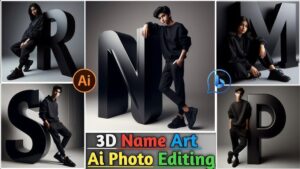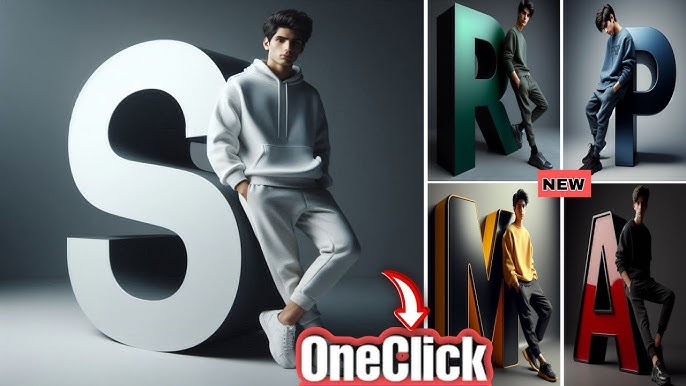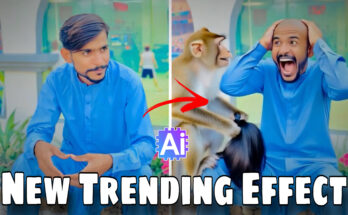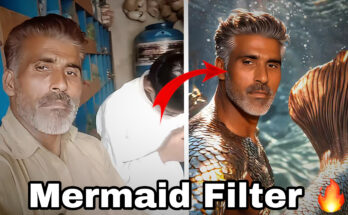3D Name Art AI Photo Editing: The Bing Image Creator’s New Trend in Personalized Digital Art
In the ever-evolving world of digital art, one trend that has truly taken center stage is the emergence of 3D name art, powered by artificial intelligence (AI). The fusion of AI technology with creativity has opened up new possibilities for personalized, eye-catching, and unique visual representations. Whether you are an artist, a digital designer, or simply someone who loves exploring new trends, the rise of 3D name art AI photo editing is something you cannot overlook. A powerful tool that has emerged in this realm is the Bing Image Creator, which allows users to transform their names into visually stunning 3D art pieces, making it easier than ever to create one-of-a-kind personalized artworks.
The Shift in the Digital Art Landscape
Over the last decade, we’ve witnessed a dramatic shift in how we perceive and interact with digital art. With the advent of powerful AI tools and advanced algorithms, the boundaries between the physical and digital realms have blurred. Artists no longer need traditional tools like brushes, paints, and canvases to create masterpieces. Instead, they can use cutting-edge technologies to produce intricate digital pieces with the click of a button.
Artificial intelligence, specifically generative AI, has taken the digital art world by storm. AI-powered programs have the ability to understand artistic styles, replicate existing designs, and even create completely original pieces of art. With the assistance of AI, anyone can now become a digital artist, even if they have no prior experience or training.
Bing Image Creator, powered by OpenAI’s DALL·E, is one of the most impressive AI image-generation tools currently available. Among its many features, it offers the ability to create 3D name art. This new trend is quickly gaining traction due to its accessibility, versatility, and the limitless creative potential it offers. But what exactly makes 3D name art so special, and why is it becoming such a popular trend? Let’s dive into this exciting new world of AI-generated 3D name art and explore its appeal.
Understanding 3D Name Art
At its core, 3D name art involves transforming your name or any word into a three-dimensional piece of art that appears to have depth, texture, and perspective. This type of art is typically used for personal branding, social media profiles, digital illustrations, and even business logos. In a way, it’s a creative way to represent your identity through typography while incorporating a three-dimensional aspect to make the text pop off the screen.
Creating 3D name art traditionally required skilled knowledge of graphic design tools such as Adobe Photoshop, Illustrator, or 3D rendering software like Blender. It was an art form that demanded not just creativity but technical expertise in visual composition and digital modeling. However, with the rise of AI-driven platforms like Bing Image Creator, anyone can now generate high-quality 3D name art within seconds, regardless of their artistic skills.
How Does 3D Name Art AI Photo Editing Work?
AI-generated 3D name art involves using a combination of natural language processing (NLP), machine learning algorithms, and image generation techniques to transform text into a visually captivating 3D design. For instance, Bing Image Creator utilizes the DALL·E 2 model, which is capable of interpreting descriptive prompts and turning them into realistic images.
To create 3D name art with AI, users input a simple prompt that includes their name (or any other text they wish to turn into art) along with any stylistic preferences. For example, you might input a prompt like: “Create a 3D text art of the name ‘John’ with a glowing neon effect and metallic texture in a futuristic style.” The AI then processes the information and generates a unique 3D design based on the parameters provided.
What makes AI-powered 3D name art so fascinating is the ability to customize every aspect of the design. Users can adjust the materials, textures, lighting, shadows, and even add effects like reflections, gradients, and depth to the final artwork. This level of control allows for an extraordinary degree of creativity, meaning no two 3D name art pieces are ever alike.

Why Is 3D Name Art Gaining Popularity?
The surge in popularity of 3D name art can be attributed to several factors, including the increasing use of AI in creative industries, the demand for personalized art, and the accessibility of new digital tools. Let’s take a closer look at why this trend is making such waves.
1. Personalization and Unique Identity
In a world where digital presence has become synonymous with personal identity, 3D name art offers an exciting way to express individuality. Whether for social media profiles, business logos, or even online signatures, having a unique visual representation of your name makes a lasting impression. Custom 3D name art allows individuals to choose every detail of their design, from the color palette to the visual effects. This customization fosters a sense of personal connection with the artwork and ensures that it reflects your own taste, style, and values.
2. Social Media Influence
Social media platforms like Instagram, Twitter, Facebook, and TikTok have made visual content more important than ever. As users look for ways to stand out and gain attention, personalized graphics like 3D name art have become essential for creating a memorable online presence. The visually striking nature of 3D name art is perfect for grabbing the attention of viewers scrolling through their feeds, making it a powerful tool for influencers, entrepreneurs, and individuals alike.
3. AI Accessibility
Before the advent of AI-based image generators, creating 3D art required high-level expertise and expensive software tools. With the introduction of platforms like Bing Image Creator, anyone with access to the internet can create professional-looking 3D art without needing to learn complex design techniques. This democratization of art creation is one of the key reasons for the rising popularity of AI photo editing tools.
4. Endless Creativity and Experimentation
AI tools offer an almost limitless range of creative possibilities. Users can experiment with a vast array of textures, colors, lighting effects, and visual styles without the limitations that traditional design tools impose. The ability to generate complex designs with a few simple inputs encourages users to explore new artistic directions and push the boundaries of their creativity.
5. Fast and Efficient Design Process
Creating 3D name art traditionally takes a considerable amount of time. In contrast, AI-powered tools can produce high-quality designs in a fraction of the time. With Bing Image Creator, users can generate multiple 3D name art designs in a matter of minutes. This speed is particularly useful for professionals who need to produce content quickly for clients or personal branding.
How to Create 3D Name Art Using Bing Image Creator
Creating your own 3D name art with Bing Image Creator is incredibly simple. Below is a step-by-step guide to help you get started:
Step 1: Access the Bing Image Creator Tool
To use Bing Image Creator, visit the official Bing website or the specific page dedicated to the tool. You’ll need a Microsoft account to access the platform. If you don’t already have one, you can easily create one for free.
Step 2: Enter Your Prompt
Once you’ve logged in, you will see a text box where you can input your prompt. Type in the name you want to turn into 3D art and include any additional details about the style or effects you’d like. For example: “Generate a 3D version of the name ‘Sarah’ with a chrome finish, glowing light effects, and a neon purple color scheme.”
Step 3: Refine Your Preferences
Bing Image Creator may also provide additional settings to fine-tune your design preferences, such as the lighting, perspective, or background. Take the time to experiment with these settings to achieve the exact look you want.
Step 4: Generate the Design
Click the “Generate” button, and within seconds, Bing Image Creator will create your custom 3D name art. The AI will take your prompt and transform it into a beautiful digital masterpiece. If the result isn’t exactly what you envisioned, you can tweak the prompt or settings and try again until you’re satisfied with the final output.
Step 5: Download and Share
Once you’re happy with the result, you can download your 3D name art in high-resolution format. From there, you can use it for various purposes, such as social media profiles, websites, digital portfolios, or as a personal logo. The possibilities are endless!
The Future of 3D Name Art and AI-Powered Creativity
As AI continues to advance, the potential for 3D name art and other forms of digital artwork will only grow. Artists and creators will gain access to even more sophisticated tools, allowing them to push the boundaries of creativity and design in new and exciting ways.
Bing Image Creator and similar AI-driven platforms are laying the foundation for the next generation of digital art, where personalization and artistic expression are easier to achieve than ever before. The trend of AI-powered 3D name art is just the beginning, and we can expect to see many more innovative developments in the years to come.
Pompts:
a real indian 16 year old boy with dark hair, dressed in a casual outfit including a black sweatshirt, jogger pants, and sneakers. The person is leaning against a large red glossy letter ‘A’, which is Black with white accents. The overall color scheme is minimalistic, focusing on shades of black and grey. The scene has a modern and clean aesthetic, with soft darks and subtle shadows.”
Generate
Conclusion
The rise of 3D name art powered by AI tools like Bing Image Creator marks a new era in digital creativity. By providing an easy, accessible, and customizable way to create personalized 3D text designs, AI is empowering users to transform their names into works of art that reflect their individuality. Whether for personal branding, social media, or creative projects, 3D name art is a trend that’s likely to stay at the forefront of digital design.
As AI technology continues to evolve, the possibilities for 3D name art will only expand, allowing for even more intricate, lifelike, and imaginative designs. Whether you’re an aspiring designer, a business owner, or simply someone looking to add a creative touch to your digital presence, AI-generated 3D name art offers a world of endless opportunities waiting to be explored.



